
Table of contents:
- DIY wooden fence construction
- Wood in the construction of fences: advantages and disadvantages
- Preparation for construction
- What materials to choose?
- How to make a wooden fence with your own hands: step by step instructions
- Protection and finishing: how to cover and paint
- Video: Building a wooden fence yourself
- Author Bailey Albertson [email protected].
- Public 2024-01-17 22:26.
- Last modified 2025-06-01 07:32.
DIY wooden fence construction

Making and installing a wooden fence with your own hands allows you not only to save energy and money, but also to logically complete the ensemble of site design. As a result, here, under the reliable protection of an attractive and solid fence, an atmosphere of true home calmness, warmth and comfort will immediately settle. But the construction of a fence made of wood - a very capricious material - requires thorough preparation. And it is best to start it with a fascinating acquaintance with a variety of constructive and design solutions. After all, after that it will not be difficult to make a choice.
Content
-
1 Wood in the construction of fences: advantages and disadvantages
- 1.1 Variety, types
- 1.2 Original designs in the photo: decoration of a summer cottage or a private house
-
2 Preparation for construction
2.1 Territory markings
-
3 What materials to choose?
- 3.1 Calculation
- 3.2 Which boards to choose for cladding?
- 3.3 Calculation of fence sheathing
- 3.4 Construction tool
-
4 How to make a wooden fence with your own hands: step by step instructions
- 4.1 Installation of supports
- 4.2 Installation of transverse lags
- 4.3 Sheathing of the frame
- 5 Protection and finishing: how to cover and paint
- 6 Video: We build a wooden fence ourselves
Wood in the construction of fences: advantages and disadvantages
Wood is an inexpensive and convenient material for technical processing and decoration, which is traditionally used in the construction of fences for private territories.

Decorative concave wooden picket fence
Despite the availability of more durable and practical material solutions - euro bars, metal, corrugated board, brick or stone - the demand for wooden fences will always be high.
The reason for this is the list of tree advantages, which includes:
- environmental friendliness;
- unique decorative qualities;
- a wide selection of textures and shades of wood species;
- ease of processing;
- ease of installation;
- simple replacement of structural elements of the fence during operation;
- low cost.
Wood is an environmentally friendly natural material that is perfectly combined with other building materials and is able to harmoniously fit into any solution for the design of the fenced area. For the construction of a wooden fence, one, maximum of two pairs of working hands is quite enough and no special knowledge, skills and tools are required. It is noteworthy that wooden fences are much cheaper than brick or metal, and their construction takes much less time and effort. And most importantly: a wide variety of wood species, as well as design and decoration methods, open up the widest scope for design ideas not only during construction, but also directly during the operation of the fence.

Self-construction of a solid wood fence
Along with its advantages, wood has a number of disadvantages, which must be taken into account when choosing this material.
The disadvantages of wooden fences include:
- Fire hazard.
- Low resistance to climatic factors.
- Pest attraction.
- Rotting susceptibility.
- Short service life (about 10 years).
To partially compensate for these shortcomings, the tree used in construction must be treated with a fire retardant, antiseptic and pest deterrent. In addition, the material must be reliably protected from moisture, dampness and sudden temperature changes. All this entails additional costs of money and time both at the construction stage and during the operation of the fence.
Variety, types
The category of wooden fences includes an extensive list of design solutions, which are distinguished primarily by their functional purpose.

Decorative fence marking the boundaries of the territory
So, the construction of a fence can be carried out in order to:
- marking the boundaries of the territory;
- ensuring privacy (protecting what is happening inside the perimeter from prying eyes and ears);
- protection against unauthorized entry;
- reducing the intensity of external noise or wind load;
- fencing potentially dangerous areas (roads, cliffs along the banks of rivers and reservoirs, steep slopes, etc.);
- decorative design of the site.
In accordance with the purpose of the fence, its design is selected, which can be:
- Deaf.
- Lattice (with gaps).
- Combined.
When choosing the type of fence structure, one should not forget about its design. The fence must fit into the existing landscape and be harmoniously combined with the design of objects located in the fenced area.
The most widely used are the following options for the design of wooden fences:
"classic"
It is a simple solid or ventilated structure with metal or wooden supports, installed by butting or on concrete, cross-beams from wooden beams and sheathing from standard edged boards.
picket fence (vertical or horizontal)
A picket fence is used as a cladding for such a fence - a thin strip with a straight or beveled upper end. Sheathing can be installed both vertically and horizontally with or without a gap.
lattice
Sheathing lattice fence is a Fixed width strap (slats) installed crosswise vertically and horizontally or at an angle 45 about. The slats are mounted with a gap or close at the same distance from each other or in groups, which allows you to create a decorative pattern of the fence fabric.
"Chess" (deaf or with a gap)
A complicated version of a picket fence with a deaf or blown-through arrangement of the sheathing in a checkerboard pattern on both sides of the fence. Elements of staggered plating are installed with a slight offset in a vertical, horizontal position or diagonally of the canvas.

Wooden fence with double-sided checkerboard
ladder (herringbone)
The cladding elements of such a fence are mounted with a gap or overlap at a certain angle along the longitudinal axis (vertically or horizontally). The turning of the fence boards is provided by means of calibrated spacers.
network
The cloth of a wicker fence is represented by thin strips or branches of the vine, braiding the vertical or horizontal edges of the supporting frame. The braid is quite difficult to manufacture, but it provides high resistance to force and has bright decorative qualities.
palisade
The picket fence is a solid canvas made of logs with ends pointed upwards. Such fences are difficult to overcome and, moreover, to break, moreover, they provide complete privacy of the territory inside the fence perimeter, as well as excellent sound and wind insulation.

Vertical wooden picket fence and its variants
log paving
A log fence is assembled from tight-fitting horizontal logs. The latter can be solid or sawn along the longitudinal axis. Log paving is a serious obstacle to intruders and provides reliable concealment of what is happening inside the fence from prying eyes and ears.
"ranch"
An open type fence, the canvas of which consists of several crossbars, additionally fastened with diagonally located logs. Ranch fences serve to delineate the boundaries of a private area or to protect against the entry of large animals, although they can also serve as decorative functions.
"cross"
The supports of such a fence, installed in most cases on a separate or striped concrete base, are equipped with side grooves, into which longitudinal sheathing elements are inserted - fence boards or beams of the appropriate thickness. Another version of the cross-style fence has horizontal sheathing, which is attached to vertical transoms supported by support posts and a concrete foundation.
This is not the whole classification. So, fences of the "vertical picket fence" group are found in such varieties as:
- solid palisade;
- palisade with gaps;
- cat or dog ears;
- private;
- peak;
- concave or convex, etc.
Original designs in the photo: decoration of a summer house or a private house
-

Fence that protects the site from the road - Wooden fence of the site along the road
-

Wooden fence to protect the site from prying eyes and uninvited guests - Solid wood fence with functions of protection and ensuring the privacy of the territory
-

Combined wood fence - Fence made of wood with combined cladding
-

Decorative wooden fence with concrete supports - Decorative vertical picket fence
-

Wooden fence with gaps - Concave vertical picket fence
-

Wooden fence with brick supports - Solid canvas of a horizontal picket fence
-

Combined horizontal fence - Combined style horizontal log fence
-

Wooden fence on metal supports - Rounded wooden picket fence as part of a convex wooden fence
-

Wooden fence on a stone foundation - Cross-style fence with brick support posts
-

Ranch style wooden fence - Fence in the style of "ranch" for fencing a summer cottage
-

Log paving of a country fence - Wooden fence with horizontal log crate
-

Palisade around the summer cottage - Wooden fence in the style of "solid palisade"
-

Vertical wattle fence on a concrete foundation - Wooden fence with a wicker canvas construction
Preparation for construction
The construction of a wooden fence, like any other object, begins with design. To solve this problem, you will need a cadastral plan of the fenced area, where the perimeter of the latter is indicated. If there is no plan at hand, the measurements will have to be performed independently.
The perimeter value is the basis for further design, therefore, it must be calculated with maximum accuracy. The data obtained should be transferred to a previously drawn scale plot of the site. In the future, this will facilitate the task of calculating the size and number of fence sections, as well as creating a working sketch of the latter.

Plan of the site enclosed by a wooden fence
Territory marking
To mark the site for the future fence, you will need wooden or metal pegs about 60 cm long, twine (or linen rope) and a hammer. The first step is to set the corner marks by driving the peg into the ground.

Setting a mark under the fence post
Further, a lace is pulled between them, which will show the linearity of the fence and the value of the perimeter, if there is no cadastral plan for the site.

A bunch of corner marks with installation under intermediate fence supports
The next step is to determine the location of the gate and the entrance gate. They are usually placed together. The standard width of the wicket is 1-1.5 m, and the size of the gate is taken in the range of 2-2.5 m, but in practice it all depends on the needs of the site owner.
At the end of the design research, the results obtained should be transferred to the plan of the fenced area. This will allow you to see the whole picture and quickly eliminate the mistakes made during planning.

Suburban area plan with a wooden fence on a stone foundation
What materials to choose?
The next step after the development of the master plan is the selection and calculation of materials for the construction of the fence. This requires:
- decide what material the support pillars will be made of;
- accept the method of mounting supports;
- calculate the main parameters of the fence (the number of supports, the dimensions of the sections and the number of transverse lags);
- determine the material from which the cladding will be made;
- calculate the cladding volume (the number of fence boards 1.8 m long);
- determine how to install transverse lags and cladding, as well as select the type and calculate the number of fasteners.
The choice of material for the support pillars is not complicated: the most preferable option is a metal profile pipe with a cross section of 60 * 60 mm (for corner supports) and 50 * 50 (for intermediate posts). Proper preparation for operation and proper installation will ensure the service life of such supports for at least 30 years.
If the soil on the fenced area belongs to the category of inactive, i.e. when the seasons change, its layers practically do not move, and the groundwater lies at a great depth (below 1.5 m), the supporting pillars of a wooden fence can be installed by backfilling or partial concreting.

Installation of a support for a wooden fence using the backing method
Finally, it is advisable to use wooden beams with a cross section of at least 40 * 40 mm as transverse logs for a fence with a section length of 2.5 m and a canvas height of 1.8 m.

Cross logs of a fence made of wooden beams
Payment
When designing, you should take into account a number of design requirements that apply to wooden fences. Strict observance of these requirements will allow you to create a truly reliable, strong and durable fence.
Basic design requirements:
- The size of the section should not exceed 2.5 m in order to avoid sagging of the transverse lags under the weight of the sheathing.
- Support pillars are installed in the soil to a depth equal to the freezing depth of the latter (80-120 cm), but not less than a quarter of their total length. When choosing a method for installing supports, you need to take into account the level of groundwater, as well as the soil composition, which affects the behavior of the soil when the seasons change.
- To give the fence the necessary reliability and stability, the corner supports, as well as the side posts of the gate and wicket must be thicker than the intermediate ones.
- The bottom line of the fence should be at least 15 cm above the soil level.
- The support pillars must be at least 10 cm higher than the fence.

Leveling the slope of the soil in the fenced area
The calculation of the parameters of the fence is carried out in several stages:
Suppose a plot has the shape of a trapezoid with bases 29 and 40 m long and sides measuring 25 and 20 m. The perimeter value is calculated by summing all the sides of the figure:
P = 29 + 40 + 20 + 25 = 114 m;
If the gate and the wicket are installed side by side on the line of the small base of the trapezoid, the length of the fence on this side of the site will be the difference between the total length of the segment and the total width of the wicket and entrance:
l 1 = 29 - (1.5 + 2.5) = 25 m;
In this case, the total length of the fence will be:
L = 25 + 40 + 20 + 25 = 110 m;
Now you can count the number of fence sections, each of which is 2.5 m long:
n sections = L / l sections = 110 / 2.5 = 44;
Having the exact number of sections, we calculate the number of support pillars using the formula:
N supports = n + 1 = 44 + 1 = 45;

Calculation of elements of a section of a fence made of wood
Next, you need to calculate the height of the support pillars. With a soil freezing depth of 80 cm, a fence height of 1.8 m, and taking into account the requirements for the height of the supports, it turns out that the total length of each of them will be:
L supports = 1.8 + 0.1 + 0.15 + 0.8 = 2.85 m;
The last step in preliminary calculations is to determine the number of transverse lags of the fence. If we take the height of the latter equal to 1.8 m, 2 crossbars will be needed for each of the sections. Thus, the total number of lags will be:
n lag = n sections * 2 = 44 * 2 = 88;
As a result of the calculations, we get the exact number of structural elements of the fence:
- 39 intermediate supports;
- 6 corner supports;
- 88 transverse logs.

Fragment of calculations for a section of a wooden fence
At this point, the basic calculations within the framework of the fence project can be considered complete. To start the practical implementation of the project, it remains to choose the cladding material and calculate its volume.
Which boards to choose for cladding?
The choice of fence sheathing depends on the design style of the latter, as well as on the way the wood is protected. As a rule, conifers - pine, spruce or cedar - are chosen for outdoor fences with a predominantly protective function.
If the priority in designing the appearance of the fence was given to its decorative qualities, hardwood trees - oak, beech, ash and birch - are much better suited for cladding. The strength indicators of such a fence will be low, but with proper processing it will look very impressive.

Differences in color, texture and structure of wood fibers of various species
Cedar belongs to the expensive and rare conifers. It stands out for its bright and beautiful texture, as well as high wear resistance.
As for oak fences, they are not often found - their construction is too expensive.
Other types of deciduous and coniferous trees, although they have good flexibility and fracture strength, are poorly resistant to moisture, therefore they are practically not used in the construction of fences.
The most accessible and cheapest timber is found in pine and spruce. It is densely saturated with resin, which is an excellent protection against dampness, mold and decay, and has an optimum humidity for outdoor use (15-20% with proper drying). Spruce wood is softer than pine, so it is easier to cut. But in terms of knotty material, spruce species are undoubtedly leading: in pine, knots begin at a significant height, while in spruce - almost immediately from the ground.
Fence sheathing calculation
The last step before going to the building materials store is calculating the number of fence boards needed to create the canvas of the fence under construction. This value is calculated as follows:
- First you need to take the amount of clearance between the pickets. Suppose it will be 4 cm.
- We measure the width of one fence board. Let it be 15 cm.
- The length of one section of the fence is known - it is 2.5 m, i.e. 250 cm. If the boards were installed back to back, 16 units could be used per section. But with a 4 cm clearance, this number can be safely reduced to 13.
- We check the correctness of our choice. The total width of the boards will be: 13 * 15 = 195 cm. Then the width of the gaps between the boards (taking into account that the gaps will be 1 more than the picket fence) will be: (13 + 1) * 4 = 52 cm. Together it will be: 195 + 56 = 251 cm, which diverges by only 1 cm from the length of the fence section, and this value can be easily compensated by increasing the size of the extreme gaps by 0.5 cm.
- We calculate the number of boards required for sheathing the entire fence (without the door leaf and wicket): 13 * 44 = 572 pcs.

Calculation of the sheathing of a wooden fence using a working sketch
Construction tool
Preparation for the construction of a wooden fence includes the collection of tools, which will greatly simplify and significantly speed up the work. The list should include:
- jigsaw;
- circular saw with discs for metal;
- welding machine;
- a hacksaw for wood;
- electric drill with a set of drills for wood and metal;
- shovel and crowbar;
- garden earth drill;
- hammer and pliers;
- a set of screwdrivers and wrenches;
- electric planer;
- emery for wood;
- brushes for processing wood with a protective compound and paint;
- building level and plumb line;
- measuring cord (twine);
- construction tape.
How to make a wooden fence with your own hands: step by step instructions
The construction of a wooden fence can be roughly divided into three stages:
- Installation of support pillars.
- Installation of crossbars.
- Frame sheathing.
Each of them deserves a more detailed description.
Installation of supports
Suppose the soil on the fenced area allows the installation of support posts of the fence using the backfilling method. Let's see how this is done using the example of one of the supports:
-
Using a garden drill, a crowbar and a shovel in one of the corners of the plot, we make a hole 1-1.2 m deep and 40-50 cm in diameter.

Preparing holes for fence supports using a hand drill Drilling holes for the support posts of a wooden fence
- At the bottom of the pit, we lay and carefully tamp a sandy pillow 10-15 cm thick.
-
Set the support in the center of the hole. This is a square profile pipe, the outer edges of which must be parallel to both arms of the fence.

Temporary fixation of the oral column in the hole Fixing the fence support when backfilling with a metal corner
- We pour a mixture of crushed stone with sand to a height of 20-25 cm at the bottom of the pit and tamp it carefully.
- We check the vertical support and the parallelism of its edges to the fence sleeves.
-
We fill in the next portion of the cushion made of sand and crushed stone, tamp it down and again check the position of the support. And so on to the very top of the pit.

Backfilling of a metal fence support on a sand cushion Installation of a fence support using the backing method
Installation of transverse lags
Fence crossbars made of wooden beams are most conveniently mounted using homemade brackets. They are made of 35 * 35 mm metal corner. But in order to save time and materials, ready-made brackets can simply be bought in the store.
Installing lag is done as follows:
- For each of the bindings, and you will need a pair of them for each support (90 pieces together), we prepare 2 pieces 10-15 cm long.
-
At the ends of each segment we make holes for bolted connections.

Metal corner for making brackets Corner with holes for making a bracket for transverse joists
- We also make holes at the ends of the beams. It is important here to make sure that they match with the previously drilled on the corner.
- We retreat 40 cm from the upper end of the support pillar. At this level, it is necessary to weld the first part of the metal corner turned down.
- We retreat another 4.5 cm, weld the second half of the bracket - a corner turned up.
- In the downward direction, we count 1 m and in the same way we weld the lower bracket. There should be 40 cm of the support post to the ground level.
- Using self-tapping screws or bolts, we mount the guides on the brackets.

Installation of transverse fence lags on a bracket fixed to the support post with bolts or self-tapping screws
Frame sheathing
Before proceeding with the installation of fence boards, we note that there are at least two ways to solve this problem. One is that the picket fence is mounted on the logs before installing the latter on the supports:
- The first step is to set the cross members at the required distance from each other, observing a single plane. This can be done using pre-prepared coasters from scrap materials.
-
It does not hurt to make templates in advance, which are convenient for laying out the gaps between the boards.

Installation of a canvas fence according to a template Installation of a picket fence on the cross logs of the fence using a template
- The lower (or upper) edge of the canvas also does not hurt to set it under the ruler. As such, you can use any of the remaining crossbars, set at the desired distance from the mounted one.
-
Using self-tapping screws or bolts, we mount fence boards on transverse joists. In this case, you need to ensure that there is no deflection or any other stress in the construction of the canvas.

Fence curtain ready for installation on the frame Assembly for wooden fence sections
- We raise the finished fence and fix it with bolts on the previously welded brackets. This will require at least two pairs of working hands. In addition, you will have to prepare stands with a height of 10-15 cm. With their help, it will be much easier to fix the canvas with lags on the brackets, which is necessary for the successful landing of the structure on the bolts.
- If the fence boards were installed without deforming the crossbars, and the latter were aligned accurately, their ends will easily fit on the brackets.

Installation diagram of a picket fence with clearance

Sheathing the frame of a wooden fence
Protection and finishing: how to cover and paint
The wooden fence is used in the open air all year round. This means that all structural elements need reliable protection from moisture, temperature fluctuations, pests, rust and fire.
In addition to moisture, harmful microorganisms and pests, ultraviolet radiation leads to a decrease in the life of a wooden fence. It accelerates the oxidation of wood fibers and evaporates the moisture contained in it. As a result, wooden fencing elements lose not only their visual appeal, but also their bearing capacity. In order to exclude premature wear of the structure, when applying impregnation, it is recommended to use special additives - UV hardeners.
The impregnating compound is applied in several layers on a deep penetration primer. Primed and impregnated wooden surfaces are covered with moisture-resistant varnish or paint, which serve as the final touch in protecting the fence from aggressive operating factors.
The condition of a wooden fence must be closely monitored throughout the entire period of operation. Any damage or material wear must be removed immediately, which will significantly increase the life of the structure. As for the choice of the method of decorating a wooden fence, it depends on many factors, the main among which are the aesthetic preferences of the owner of the site and his financial capabilities. For example, a finished fence can be decorated or even strengthened with forging, give it an original color, experimenting with impregnations and topcoats, decorate with glass or stone inserts, etc. At the same time, you can decorate the fence gradually, the main thing is at the very beginning to reliably protect it from moisture, pests and burnout in the sun.

Decor option for a solid picket fence in the form of pencils
Video: Building a wooden fence yourself
Building a wooden fence with your own hands requires careful preparation. Even at the design stage, you need to carefully study the building materials market and try to determine the conditions in which the fence will be used. With careful attention to the basic design requirements, as well as the whims of the basic material, the independent construction of the fence will take a minimum of effort and bring maximum pleasure and benefit.
Recommended:
How To Make A Children's Swing In The Country With Your Own Hands (made Of Wood Or Metal, Drawings, Photos And Videos)
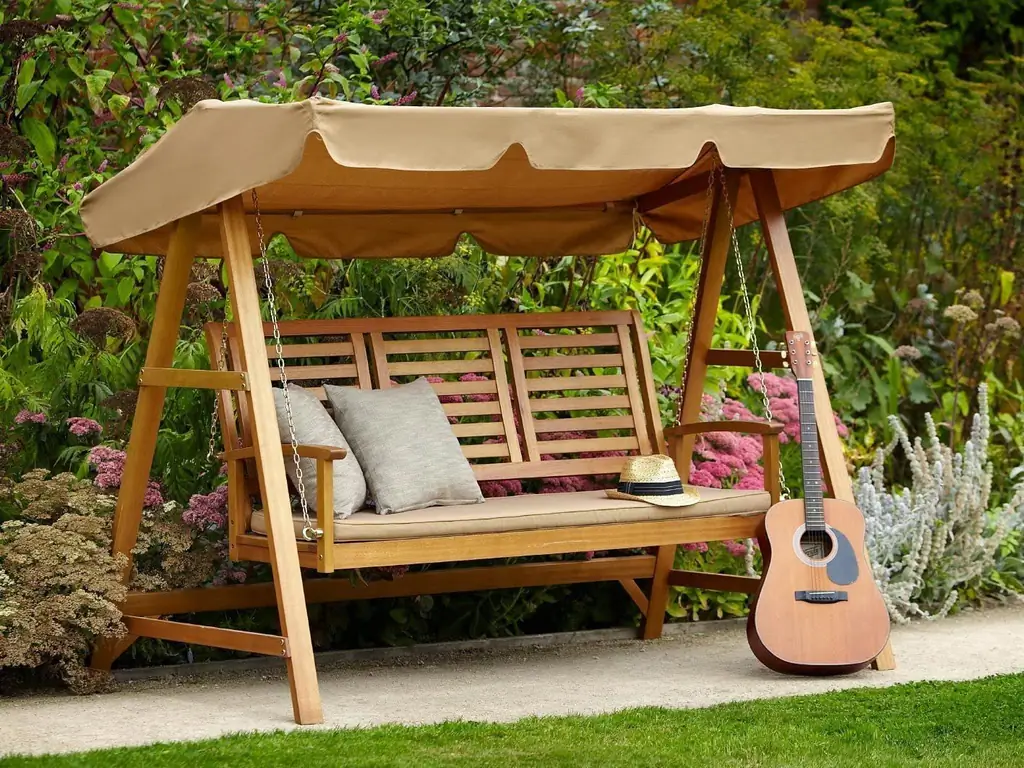
Step-by-step instructions for the construction and installation of a swing at a summer cottage. Material selection, tools, model drawings
How To Make A Bar Stool With Your Own Hands From Wood, Metal And Other Materials + Drawings, Photos And Videos
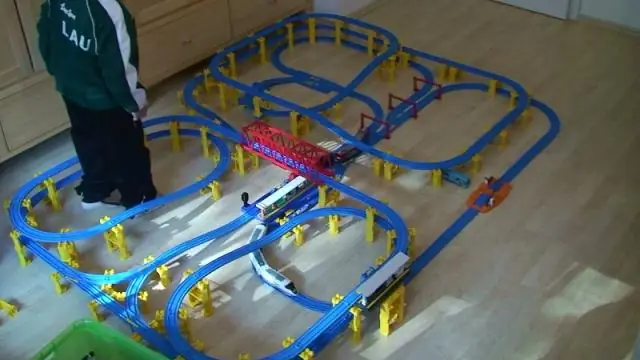
Bar stools manufacturing options. Required tools, materials used. Step-by-step description of the manufacturing process with a photo
How To Choose And Build A Foundation For A Bath With Your Own Hands - 4x6, 3x4 And Other Sizes, Tips, Instructions, Photos And Videos
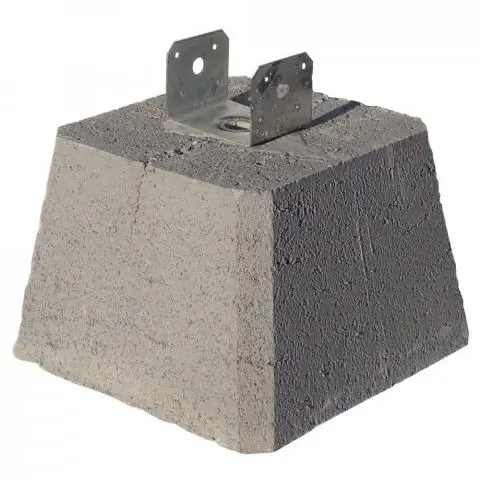
How to make a foundation for a bath with your own hands. Types and features of foundations. The choice of materials and technology, installation rules and step-by-step instructions
DIY Children's Slide Made Of Wood And Other Materials - Instructions With Photos And Videos
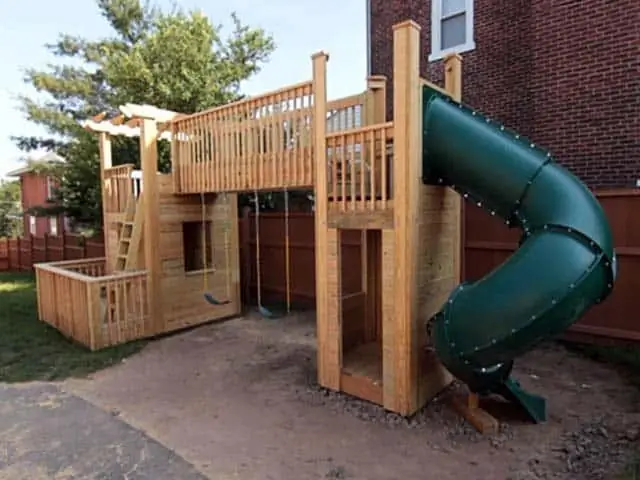
Types of children's slides. Wood slide construction technology. Installation instructions for a metal children's slide
How To Make A Screen With Your Own Hands From Wood And Other Materials + Photos And Videos
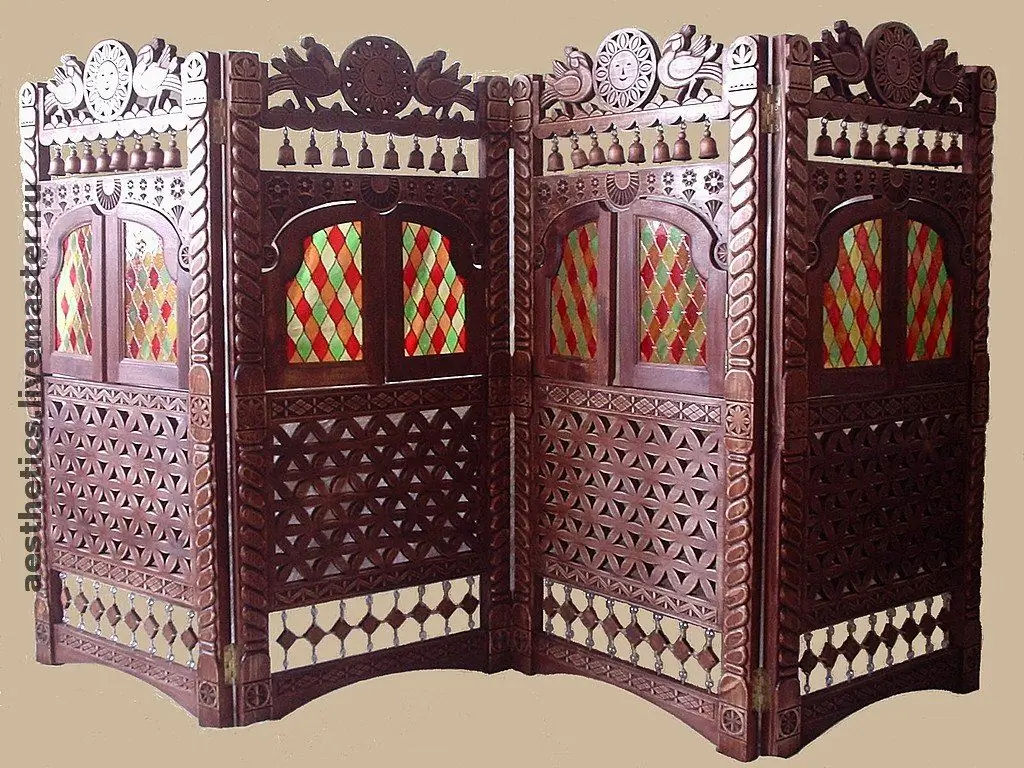
What screens are there, what they are for. Materials for making screens with your own hands. Step-by-step instructions with drawings for manufacturing
